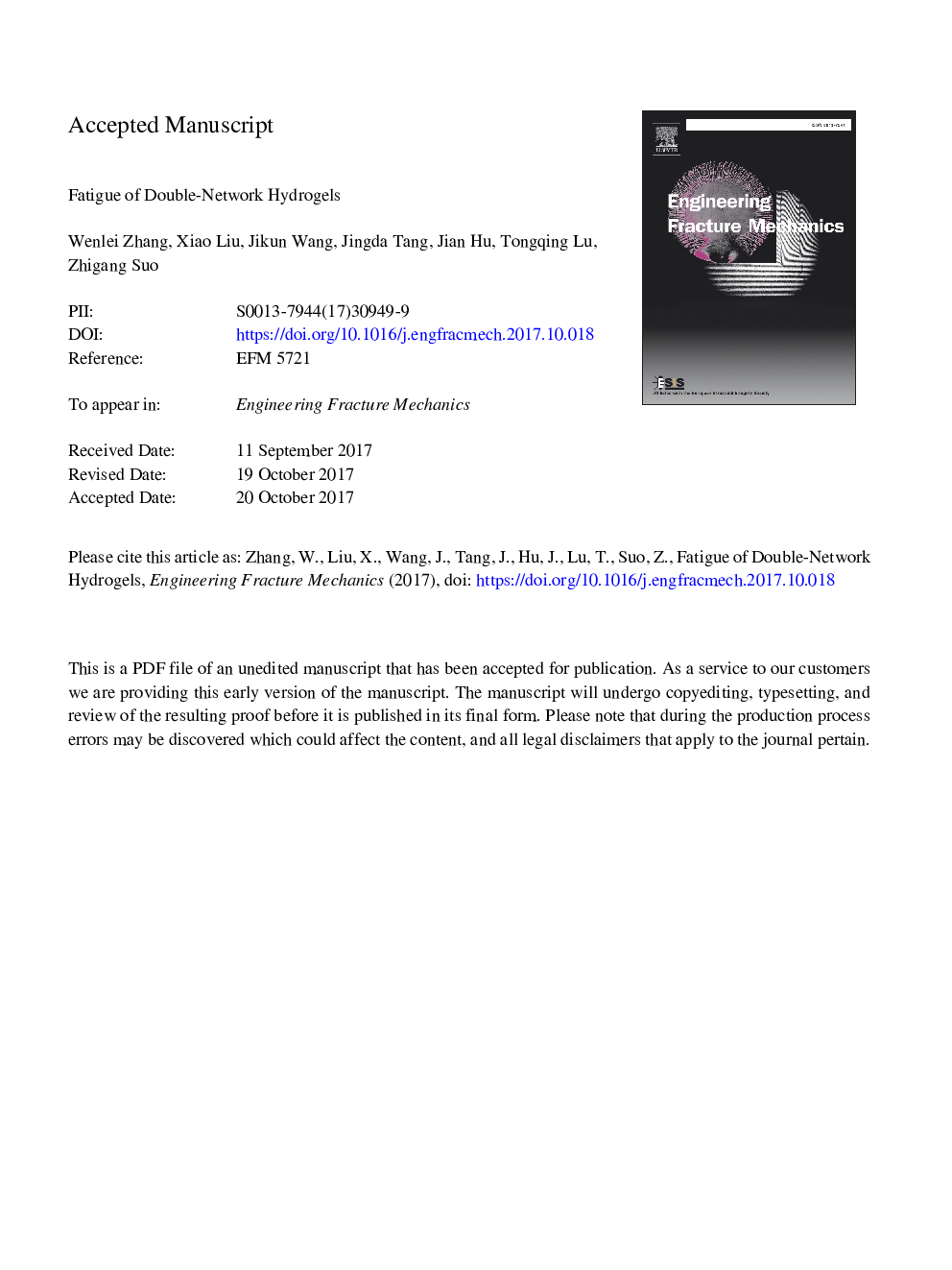| Article ID | Journal | Published Year | Pages | File Type |
|---|---|---|---|---|
| 7169252 | Engineering Fracture Mechanics | 2018 | 51 Pages |
Abstract
The discovery of tough hydrogels of many chemical compositions, and their emerging applications in medicine, clothing, and engineering, has raised a fundamental question: How do hydrogels behave under many cycles of stretch? This paper initiates the study of the fatigue behavior of the classic PAMPS/PAAM double network hydrogels discovered by Gong and her co-workers [25]. We reproduce the hydrogels, and prepare samples of two types, with or without a crack cut before the test. When an uncut sample is subject to cyclic stretches, internal damage accumulates over thousands of cycles until a steady state is reached. When a cut sample is subject to cyclic stretches, the crack extends cycle by cycle if the amplitude of stretch is above a certain value. A threshold of energy release rate exists, below which the crack remains stationary as the sample is cycled. We find a threshold around 400 J/m2 for hydrogels containing PAAM networks of a low density of crosslinkers, and around 200 J/m2 for hydrogels containing PAAM networks of a high density of crosslinkers. The experimental findings are compared to the Lake-Thomas model adapted to the double-network hydrogels.
Related Topics
Physical Sciences and Engineering
Engineering
Mechanical Engineering
Authors
Wenlei Zhang, Xiao Liu, Jikun Wang, Jingda Tang, Jian Hu, Tongqing Lu, Zhigang Suo,
